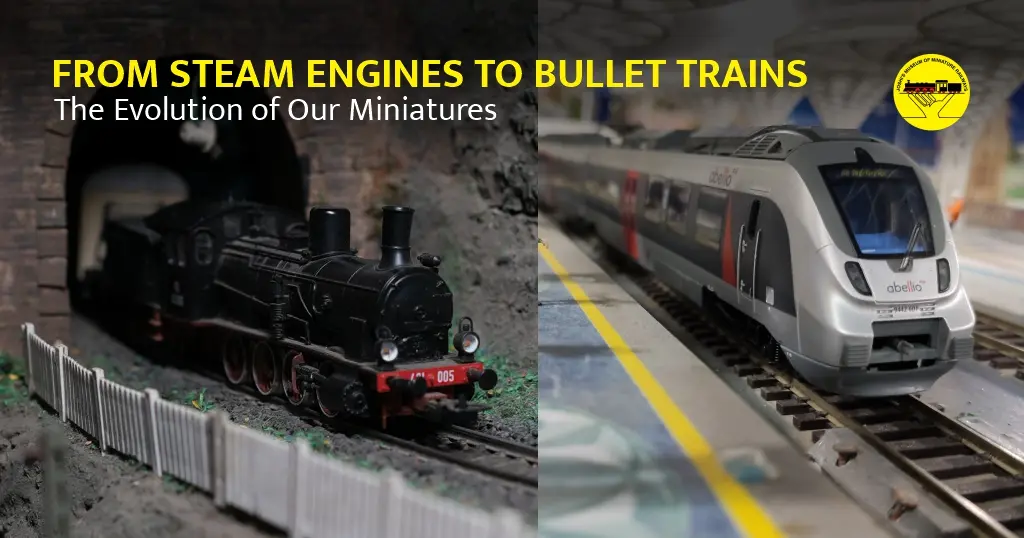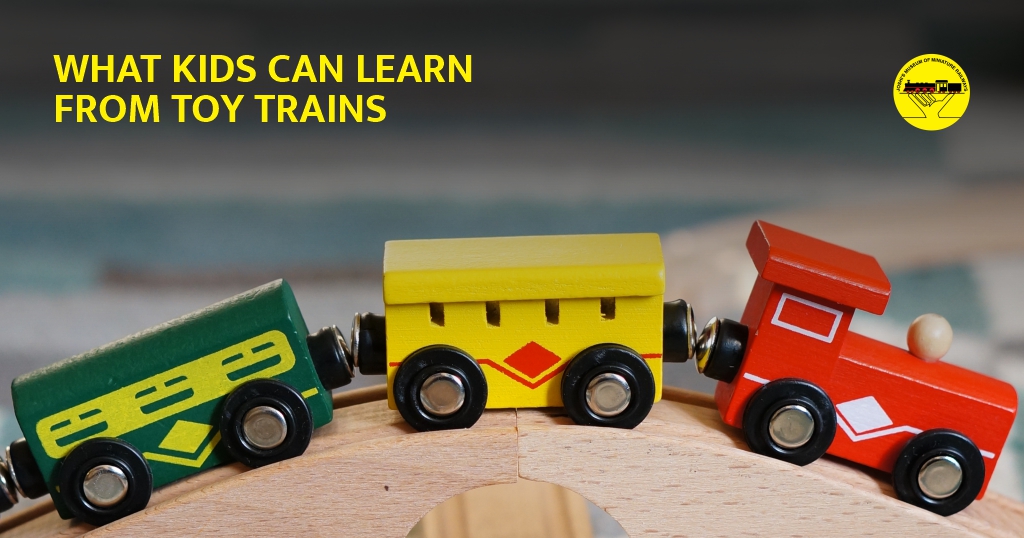Miniature trains have always fascinated people of all ages. Whether chugging around intricate landscapes in museums or rolling through elaborate home layouts, these small-scale locomotives have a unique ability to transport us into a world of imagination and engineering marvels. But what most people don’t see is the meticulous maintenance work that goes on behind the scenes to keep them running perfectly.
From finely engineered gears to track alignment and electrical precision, maintaining miniature trains is both an art and a science. In this blog, we’ll explore the behind-the-scenes work that powers the magic of miniature railways, highlight key areas of upkeep, and look at common problems and how enthusiasts and professionals solve them.
Why Miniature Train Maintenance Matters
Model trains may be smaller in scale, but they’re subject to wear and tear just like real trains. Dust, temperature changes, friction, and handling can all affect performance. Whether it’s a public display like Joshi’s Museum of Miniature Railways in Pune or a hobbyist’s home setup, regular maintenance ensures smooth operations, accurate movement, and a visually satisfying experience.
Neglecting maintenance can result in poor running performance, derailed trains, flickering lights, or even permanent mechanical damage. The longevity and realism of the setup depend on how well the trains and infrastructure are cared for.
Critical Areas of Maintenance
1. Track Care and Cleanliness
Clean, properly aligned tracks are essential. Even a thin layer of dust can interrupt electrical contact between the tracks and wheels, leading to stutters or halts. Tracks are cleaned with microfiber cloths, alcohol solutions, or dedicated track-cleaning cars. Misaligned joints and uneven sections are carefully adjusted to prevent derailments and ensure the trains stay on course.
2. Locomotive Motors and Gears
The motor is the powerhouse of the train. Over time, friction inside the motor and gear assembly can cause wear. Gears require lubrication with plastic-compatible oils applied sparingly to avoid gumming up the system. In addition, motor brushes may need replacement after extensive use. Maintenance teams frequently check for odd noises or reduced speeds—both signs of gear wear or lubrication issues.
3. Electrical Contact and Power Flow
Miniature trains receive power from the tracks via metal wheels. If the wheels or contact points are dirty, the train may jerk, stall, or fail to start. Cleaning the wheels regularly and ensuring the contact springs are properly tensioned helps restore smooth, uninterrupted movement. In DCC (Digital Command Control) systems, good contact is even more crucial as electrical signals also carry commands, not just power.
4. Scenic Detail and Paint Care
Many model trains have intricate paintwork, decals, and tiny detailing like pantographs, horns, and ladders. Regular dusting with soft brushes or compressed air keeps them clean without damaging delicate parts. Paint fades under strong lighting or direct sunlight, so exhibit lighting must be carefully designed, and UV protection is often used in museum-grade displays.
A Day Inside a Maintenance Workshop
In places like Joshi’s Museum, the maintenance team follows a tight schedule. Daily checks include running test loops, cleaning high-use tracks, and inspecting for loose couplings or obstructions. Weekly maintenance involves more thorough inspections of engines, lubrication of moving parts, and testing of sound and light functions in coaches.
Each engine and coach has a maintenance log, and even the digital control systems are updated and tested regularly. This disciplined workflow ensures there are no surprises during live public demonstrations.
Common Miniature Train Problems (and How They’re Fixed)
Despite careful handling, certain issues appear regularly in both museum and home settings. Let’s take a closer look at some of the most common problems—and how seasoned model train maintainers deal with them.
One of the most frequent complaints is that the train stops unexpectedly mid-track. This is usually due to dirt on the track or wheels. A quick wipe with alcohol-based cleaner on both surfaces restores conductivity. Some enthusiasts use track-cleaning cars or motorized polishers for larger layouts.
Jerky or hesitant movement is another classic issue. It often stems from poor electrical contact. Contact springs may have lost their tension or wheels may not be seated correctly. The fix involves adjusting the pickups, cleaning all wheel surfaces, and ensuring the track is level and aligned.
Another sign something’s wrong is when the engine makes excessive noise, especially grinding or squealing. This is almost always due to dry gears or loose motor mounts. Applying a small amount of lubricant in the right places, tightening any loose screws, and checking gear wear typically solves the problem.
If the train lights flicker while running, it’s a sign of intermittent power. This could be caused by dirty wheel pickups or faulty wiring inside the locomotive. Opening the engine shell, checking solder joints, and cleaning the power pickups usually resolves the issue.
Derailments, particularly on curves or at switches (points), are a perennial issue. These are commonly due to misaligned track joints or incorrect wheel spacing (known as wheel gauge). Ensuring the track has consistent spacing and making sure wheelsets match manufacturer standards usually prevents this.
Some trains also feature smoke units, and when these stop working, it’s usually because the smoke fluid has dried up or the resistor in the unit has burned out. Replacing the resistor or topping off the fluid typically restores the effect.
Lastly, a more mechanical issue occurs when couplers fail to connect or disconnect properly. This usually happens when the coupler heights are mismatched or the mechanism is worn out. Adjusting the mounting or replacing the couplers entirely helps maintain realistic operation and train integrity.
Tools That Keep the Trains Running
Model train maintenance requires more than just patience—it also calls for specialized tools. Some of the most commonly used items include:
- Track gauges for checking alignment
- Miniature screwdrivers and pliers for fine assembly work
- Multimeters to check voltage and electrical continuity
- Wheel cleaner pads and brushes
- Lubricants and precision oilers
Proper tools not only make maintenance easier but also reduce the risk of damaging tiny, delicate parts.
Advice for Home Hobbyists
If you’re building or running a model railway at home, following a few simple practices can save you a lot of trouble:
- Handle trains with clean hands or gloves to avoid oil deposits.
- Store trains in dust-proof containers when not in use.
- Create a simple maintenance checklist to follow monthly or quarterly.
- Join local hobbyist clubs or forums to exchange tips and source rare parts.
- Invest in quality track and locomotives—they require less frequent intervention.
Home hobbyists often find that maintaining trains becomes a rewarding part of the hobby. It connects you more deeply to the craft and ensures your trains run like new for years.
The Unseen Craft of Model Train Maintenance
For every miniature train you see gliding perfectly across a landscape, there’s a dedicated person—or team—working behind the scenes. Maintenance is not just about cleaning or fixing; it’s about preserving the illusion of a living, breathing railway in miniature form. It’s about ensuring that when a child points in wonder, or a parent is reminded of their own childhood, the train does exactly what it’s supposed to: move forward, smoothly, silently, and full of magic.
In a place like Joshi’s Museum of Miniature Railways, this invisible effort becomes a daily ritual—a blend of engineering, passion, and storytelling. Because in the world of miniature railways, even the tiniest screw can hold together a grand experience.
FAQs
Q1. How often should model trains be serviced?
Model trains should be inspected every few weeks, depending on how often they’re used. Regular runners need weekly checkups.
Q2. Why do model trains stall or jerk during operation?
This usually indicates dirt on the wheels or track, or poor electrical contact between the engine and rail.
Q3. What’s the best way to clean model train tracks?
Use isopropyl alcohol with a lint-free cloth or a dedicated track-cleaning car for larger layouts.
Q4. Are certain brands easier to maintain than others?
Yes, premium brands often use higher-quality components and standardized parts, making maintenance easier and more predictable.
Q5. Can I maintain DCC locomotives the same way as analog ones?
Yes, but with added caution—DCC systems involve sensitive electronics, so avoid conductive lubricants and always check software updates.







